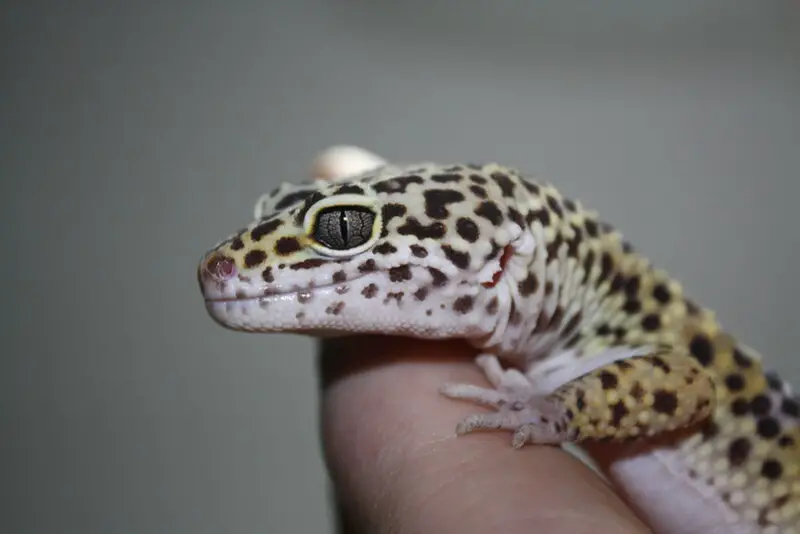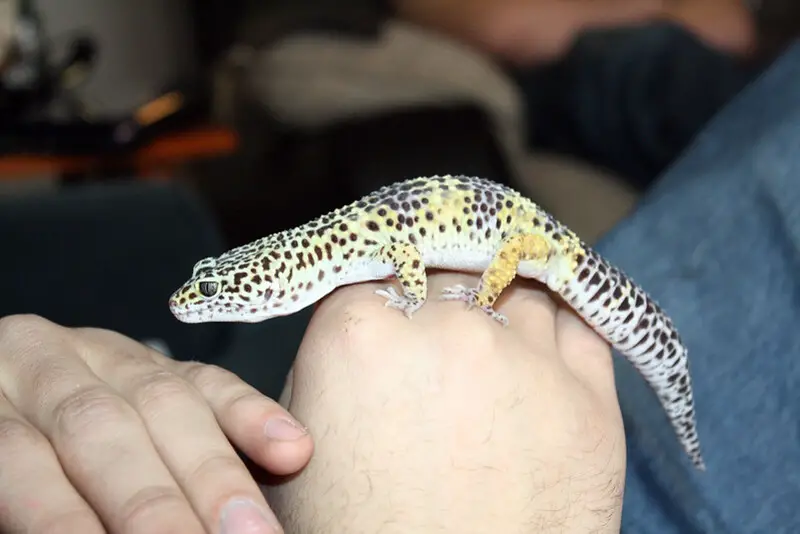One common question among leopard gecko owners and enthusiasts is whether these lizards like to be held. This comprehensive guide will provide a thorough understanding of leopard gecko behavior, preferences, and the best practices for handling and interacting with them.

Leopard Geckos and Their Natural Behavior
To understand whether leopard geckos like to be held, it’s essential to delve into their natural behavior and characteristics. Leopard geckos are native to arid regions of South Asia, primarily in Afghanistan, Pakistan, and parts of India. Their natural environment and adaptations play a significant role in their behavior.
- Nocturnal Creatures: Leopard geckos are crepuscular, meaning they are most active during dawn and dusk. They are generally less active during the day, which is when they often sleep and seek shelter.
- Ground-Dwelling and Burrowing: In the wild, leopard geckos are ground-dwelling and have a burrowing lifestyle. They create burrows to escape extreme temperatures, find refuge from predators, and lay their eggs.
- Low Activity Level: Leopard geckos have relatively low activity levels, and their movements are slow and deliberate. This is partly due to their lower metabolic rate compared to warm-blooded animals like mammals.
- Solitary Animals: In their natural habitat, leopard geckos are solitary animals. They are generally territorial and do not form social groups.
- Nocturnal Predators: Leopard geckos are opportunistic feeders that primarily consume insects. They use their keen sense of smell and sight to locate and catch prey during the night.
Understanding these natural behaviors and adaptations is essential for gauging how leopard geckos perceive and respond to human interaction, including being held.
Leopard Gecko Personality and Individual Variability
Leopard geckos have individual personalities and can exhibit varying levels of tolerance for handling. Some leopard geckos may be more outgoing and amenable to human interaction, while others may be more reserved or cautious. Factors contributing to their individual personalities and behavior include:
- Age: Young leopard geckos are often more active and curious, while older geckos may be calmer and more accustomed to their environment.
- Handling Experience: The amount and quality of handling during their early stages of life can influence their comfort level with human contact.
- Health and Stress: The health and stress levels of a leopard gecko can affect its behavior and response to handling. A healthy and unstressed gecko is more likely to be receptive to interaction.
- Environmental Conditions: An appropriately set-up enclosure with suitable temperature, humidity, and hiding spots can contribute to a gecko’s overall comfort and confidence.
Given this individual variability, it’s important to approach handling with patience and sensitivity to the unique personality of your leopard gecko.

Reasons to Handle Leopard Geckos
Handling leopard geckos can be beneficial for both the gecko and the owner. Here are some reasons to handle your leopard gecko:
1. Bonding and Interaction
Handling provides an opportunity for you to bond with your leopard gecko and build trust. Over time, they may become more accustomed to your presence and even associate you with positive experiences, such as feeding.
2. Health Checks
Regular handling allows you to monitor your gecko’s health and detect any issues early. You can assess their body condition, check for signs of shedding, and observe any changes in behavior.
3. Enrichment
Interaction with their environment, including being held, can provide mental stimulation and enrichment for leopard geckos. This stimulation can help prevent boredom and promote a more active and curious disposition.
4. Socialization
Some leopard geckos are more social and enjoy human interaction. These geckos may actively seek out attention and appear to enjoy being handled.
5. Familiarity
Frequent handling can help desensitize your gecko to human contact, making it more comfortable with the experience over time.
6. Educational Value
Handling can be an educational experience, allowing you to observe and learn more about the behavior and characteristics of your leopard gecko.
Handling Guidelines and Best Practices
While handling your leopard gecko can be a positive experience for both you and your pet, it’s crucial to follow specific guidelines and best practices to ensure their well-being and comfort. Here are some key considerations for safe and enjoyable handling:
1. Wash Your Hands
Before handling your leopard gecko, always wash your hands thoroughly with unscented soap and warm water. This helps remove any residues or scents that might be perceived as a threat by your gecko.
2. Choose the Right Time
Select a time when your leopard gecko is most likely to be awake and alert, typically during the evening or early morning. Avoid waking them from deep sleep or disturbing them during the day, as this can lead to stress.
3. Approach Slowly
Approach your gecko calmly and slowly. Abrupt movements or loud noises can startle them. Gradually extend your hand towards them, allowing them to observe you and become accustomed to your presence.
4. Support Properly
When picking up your leopard gecko, use gentle and deliberate movements. Place one hand under their body to provide support and use the other hand to scoop them up from the side. Avoid squeezing or pinching, as this can cause discomfort.
5. Be Gentle
Handle your gecko with care and gentleness. Avoid sudden movements, and handle them in a way that minimizes stress. Keep handling sessions brief, especially if your gecko appears anxious.
6. Watch for Signs of Discomfort
Pay close attention to your gecko’s body language and behavior. If they display signs of stress or discomfort, such as tail-wagging, vocalization, or attempts to flee, it’s essential to respect their boundaries and return them to their enclosure.
7. Supervise Interaction
If you have children or other individuals handling your gecko, ensure that they are gentle and supervised. Children, in particular, should be taught how to handle leopard geckos safely and respectfully.
8. Use Caution with New Geckos
If you have a new or particularly shy leopard gecko, be especially patient and gentle when introducing them to handling. Allow them time to adjust to their new environment before increasing the frequency of handling.
9. Avoid Handling During Shedding
Leopard geckos may be more sensitive and irritable during the shedding process. Avoid handling them during this time to reduce stress and prevent potential harm to their fragile, new skin.
10. Create a Safe Handling Environment
Select a safe and controlled environment for handling. This minimizes the risk of accidental falls or escapes. A table or a surface with boundaries is preferable to handling your gecko on an open floor.

Signs of Stress in Leopard Geckos
It’s crucial to be aware of signs of stress in your leopard gecko and respond accordingly. Stress can occur during handling, and recognizing these signs allows you to make adjustments to ensure their comfort and well-being. Common signs of stress in leopard geckos include:
- Tail-wagging: Rapid side-to-side tail movement, which can be a sign of agitation.
- Vocalization: Some geckos may produce vocalizations when stressed, although these sounds are relatively rare.
- Attempts to Flee: Your gecko may try to escape from your hand or the handling situation.
- Darkened Colors: A change in skin color to a darker or more vibrant hue can be a sign of stress.
- Aggressive Behavior: Some geckos may exhibit aggressive behavior, including biting, when they are highly stressed.
- Reduced Activity: A stressed gecko may become less active or hide after a handling session.
If you observe signs of stress, it’s essential to place your gecko back in their enclosure and allow them to return to their hiding spot or burrow for comfort. Reducing handling frequency and ensuring a secure and enriching environment can help minimize stress.
When Leopard Geckos May Not Enjoy Being Held
Leopard geckos may not enjoy being held or may be less receptive to handling in specific situations. It’s important to recognize when handling may be less favorable or when it should be approached with caution:
1. New or Shy Geckos
Newly acquired leopard geckos or geckos that are naturally more reserved may require time to adjust to their new environment. They may be less comfortable with handling initially.
2. During Shedding
Leopard geckos often become sensitive during the shedding process due to their delicate, new skin. Handling during this time can lead to discomfort and potential harm.
3. Illness or Injury
Geckos that are unwell or have injuries may not appreciate handling. Stress can exacerbate their condition, so it’s best to avoid handling and consult a veterinarian for appropriate care.
4. Gravid Females
Female leopard geckos that are carrying eggs (gravid) may be less interested in being held. The extra weight and discomfort of carrying eggs can make handling stressful for them.
5. Environmental Stress
Changes in the gecko’s environment or enclosure, such as new tank mates or alterations to their habitat, can induce stress and make them less receptive to handling.
6. Forced Handling
Forcing a leopard gecko to be held when they show signs of distress or resistance is not advisable. Respect their boundaries and preferences.
7. Excessive Handling
Frequent or prolonged handling sessions can lead to stress and discomfort for leopard geckos. It’s essential to balance interaction and allow them to rest.
Signs That Leopard Geckos May Enjoy Being Held
While leopard geckos are generally not as social or interactive as some other reptiles, there are signs that can indicate they are more comfortable with handling:
- Calm Behavior: A leopard gecko that remains calm and does not display signs of stress during handling is more likely to enjoy the experience.
- Exploration: Some geckos may display curiosity and explore your hand or the surroundings while being held. This indicates that they are comfortable and not trying to escape.
- Relaxed Body Language: A relaxed body posture, with limbs and tail not held in a defensive or agitated manner, suggests comfort.
- Acceptance of Handling: Leopard geckos that tolerate handling without displaying stress signals, such as tail-wagging or vocalization, are more likely to enjoy the experience.
- Improved Comfort Over Time: With regular, gentle handling, some geckos may become more accustomed to human contact and may even appear to seek out interaction.
It’s important to remember that leopard geckos have individual personalities and preferences. While some may be more receptive to handling and even seem to enjoy it, others may prefer less interaction. Respecting your gecko’s preferences is essential for their well-being.

Encouraging Positive Interaction
If you want to encourage positive interaction and improve the comfort level of your leopard gecko with handling, consider the following tips:
1. Gradual Introduction
If your leopard gecko is new or unaccustomed to handling, introduce it gradually. Start with short sessions and increase the duration over time as they become more comfortable.
2. Positive Associations
Associate handling with positive experiences for your gecko. Offer a treat or feed them after a handling session. This creates a positive link between being held and receiving rewards.
3. Respect Boundaries
Respect your gecko’s boundaries. If they display signs of distress or discomfort, such as tail-wagging or vocalization, return them to their enclosure and try again at another time.
4. Handling Accessories
Using soft, comfortable handling accessories, such as a gentle cloth or your hand, can provide a more secure and less intimidating experience for your gecko.
5. Consistent Handling
Regular but brief handling sessions can help your gecko become accustomed to being held. Consistency and patience are key.
6. Watch for Signs of Enjoyment
Observe your gecko’s behavior during handling. If they appear relaxed, explore their surroundings, or seem unbothered, it suggests they are more comfortable with the experience.
7. Be Mindful of Environment
Ensure that the gecko’s enclosure is well-maintained and meets its needs for temperature, humidity, hiding spots, and enrichment. A comfortable and enriched environment contributes to a contented gecko.
8. Individualized Approach
Recognize that not all leopard geckos have the same level of comfort with handling. Tailor your approach to your gecko’s unique personality and preferences.
Conclusion
Leopard geckos are unique reptile pets with individual personalities and comfort levels when it comes to handling. While some geckos may actively seek human interaction and appear to enjoy being held, others may be more reserved or cautious. It’s important to respect your gecko’s preferences and boundaries, and to approach handling with patience, gentleness, and understanding.
